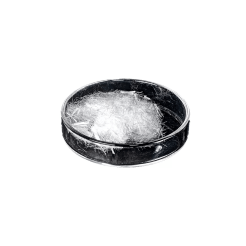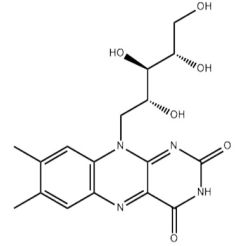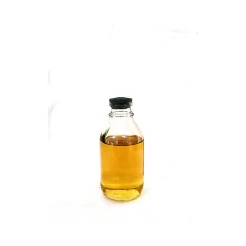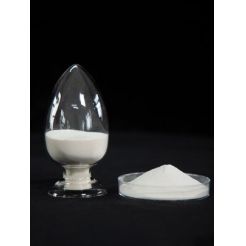High Quality Thidiazuron 50% Wp
Thidiazuron, a novel and highly effective cytokinin, can be used in tissue culture to better promote the bud differentiation of plants. Low toxicity to humans and animals, suitable for cotton as a defoliating agent
Product Description
Introduction
| Product name | Thidiazuron |
| Specification |
95%TC powder, 97%TC powder,98%TC powder 0.1%SL,0.5%SL,50%WP,
80%WP,55%SC,30%ÔD
|
| CAS | 51707-55-2 |
| Molecular formula | C9H8N4OS |
| EINECS | 257-356-7 |
| Package | 1kg/BAG; 25KG/Drum; or as Customised requirement |
| Type | Thidiazuron for grapes Thidiazuron for jujube Thidiazuron for tomatoes Thidiazuron for Apple Thidiazuron for kiwi fruit |
| Precautions | 1. The pesticide application period should not be too early, otherwise it will affect the yield. 2. Rainfall within two days after application will affect the efficacy of the medicine. Pay attention to weather precautions before application. 3. Do not contaminate other crops to avoid phytotoxicity. |
Thidiazuron is a substituted urea plant growth regulator, mainly used in cotton and used as a defoliant in cotton planting. After thidiazuron is absorbed by the leaves of the cotton plant, it can promote the natural formation of the separation tissue between the petiole and the stem as soon as possible and cause the leaves to fall, which is beneficial to mechanical cotton harvesting and can advance the cotton harvest by about 10 days, helping to improve the cotton grade. It has strong cytokinin activity at high concentrations and can induce plant cell division and promote callus formation. It can promote plant growth at low concentrations, preserve flowers and fruits, accelerate fruit development and increase yield. When used on beans, soybeans, peanuts and other crops, it will significantly inhibit growth, thereby increasing crop yields.
Fuction
a. Regulate growth and increase yield
At tillering stage and flowering stage of rice, 3 mg/L thiazenon spray once on each leaf surface can improve the quality of rice agronomic traits, increase the number of grains per spike and seed setting rate, decrease the number of grains per spike, and increase the maximum yield by 15.9%.
The grapes were sprayed with 4~6 mg of L thiabenolon at about 5 days after the flowers fell, and the second time at an interval of 10 days could promote fruit setting and swelling and increase yield.
Apples in the center of the apple tree blossom 10% to 20% and full flowering period, with 2 to 4 mg/L of thiabenolon medicine applied once, can promote fruit setting.
1 day or on the day before flowering, 4~6 mg/L thiabenolon was used to soak the melon embryo once, which could promote the yield increase and increase the rate of sitting melon.
Tomato spray 1 mg/L liquid medicine once before flowering and at young fruit stage can promote fruit development and increase yield and income.
Soaking cucumber embryo with 4~ 5 mg/L thiabenolon once before flowering or on the same day can promote fruit setting and increase single fruit weight.
After harvesting celery, spraying the whole plant with 1-10 mg/L can delay chlorophyll degradation and promote green preservation.
The single fruit weight and yield of jujube increased when 0.15 mg/L thiaphenone and 10 mg/L gibberellic acid were applied in early flowering, natural fruit dropping and young fruit expansion
b. Defoliants
When cotton peach cracking more than 60%, 10~ 20 g/ mu of tiphenuron is evenly sprayed on the leaves after water, which can promote leaf shedding.
Comparison of advantages and disadvantages of thiaphenone and ethephon alone:
Ethephon: The ripening effect of ethephon is better, but the defoliation effect is poor! When used on cotton, it can quickly crack the cotton peach and dry the leaves, but there are also many advantages and disadvantages of ethylene:
1, the ripening effect of ethephon is good, but the defoliation effect is poor, it makes the leaves form "dry without falling", especially when the use of mechanical harvesting of cotton pollution is very serious.
2, at the same time of ripening, the cotton plant also quickly lost water and died, and the young bolls on the top of the cotton also died, and the cotton production was more serious.
3, cotton batting is not good, cotton peach cracking is easy to form a shell, reduce the efficiency of harvesting, especially when mechanical harvesting, it is easy to harvest unclean, the formation of secondary harvesting, increase the cost of harvesting.
4, ethephon will also affect the length of cotton fiber, reduce cotton varieties, easy to form dead cotton.
Thiabenolon: thiabenolon leaf removal effect is excellent, ripeness effect is not as good as ethephon, subject to weather conditions (there are individual manufacturers with better production technology, the production of thiabenolon effective additives, can greatly reduce the weather constraints of thiabenolon), but reasonable use will play a good effect:
1, after the use of thiaphenone, it can make the cotton plant itself produce abscisic acid and ethylene, resulting in the formation of a separate layer between the petiole and the cotton plant, so that the cotton leaves fall off by themselves.
2. Thiaphenone can quickly transfer nutrients to young cotton bolls on the upper part of the plant while the leaves are still green, and the cotton plant will not die, achieving ripening, defoliation, yield increase, quality enhancement and multi-effect combination.
3, thiabenolon can make cotton early, cotton boll batting relatively early, concentrated, increase the proportion of cotton before frost. Cotton does not clip the shell, does not drop the wadding, does not drop the flower, increases the fiber length, improves the garment fraction, is conducive to mechanical and artificial harvesting.
4. The efficacy of thiazenon is maintained for a long time, and the leaves will fall off in the green state, completely solving the problem of "dry but not falling", reducing the pollution of the leaves on the machine cotton picking, and improving the quality and efficiency of the mechanized cotton picking operation.
5, thiaphenone can also reduce the harm of pests in the later period.
Application


Matters needing attention
1. The application period should not be too early, otherwise it will affect the yield.
2. Rain within two days after application will affect the efficacy. Pay attention to weather prevention before application.
3. Do not pollute other crops to avoid drug damage.

Email: senton3@hebeisenton.com
Mob.: +86 199 4348 8906
Tel.: +86 311 6800 1160
Add.: 17th COFCOHB Plaza No.345 Youyi North Street Shijiazhuang Hebei China











